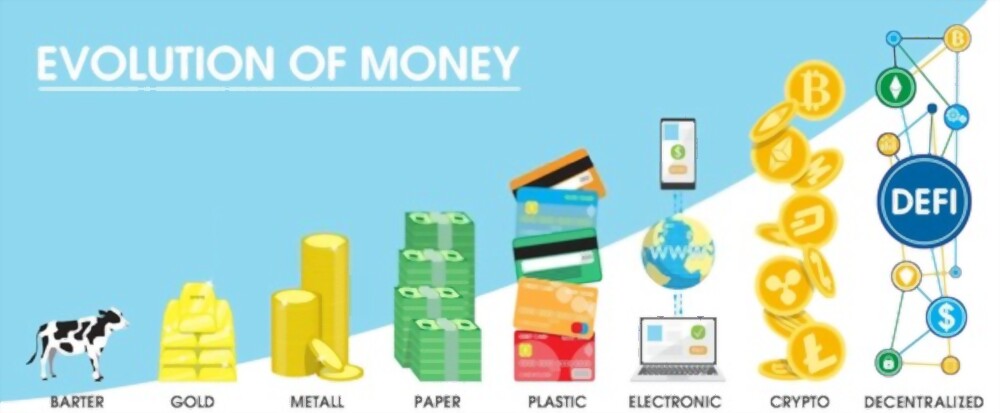Centralized Exchange (CEX) vs Decentralized Exchange (DEX)
With the birth of the original idea of blockchain technology by two renowned scientists Stuart Haber and W. Scott Stornetta and further practical with the view of providing a computational
solution for time-stamping digital documents so that they could not be backdated or tampered and using cryptographically secured chain of blocks and further introduction of Merkle Trees in 1992, the journey towards creation of blockchain systems started and later taken over by computer scientist and cryptographic activist Hal Finney in 2004 who then created the first and early form of cryptocurrency with his Reusable Proof Of Work(RPoW). His work laid the foundation for Satoshi Nakamoto in 2008.
Satoshi Nakamoto improved the system and added blocks to the initial chain without requiring them to be signed by trusted parties; rather, a peer-to-peer network for timestamping and verifying each exchange thereby eliminating the need for a central authority.
The work of Satoshi gave the cryptocurrency its Decentralized nature and propelled it for growth but with the birth of multiple cryptocurrency wallets, exchanger platforms, and the quest by governments to regulate the use and growth of cryptocurrency, the exchangers are now categorized according to their operations which makes them Centralized or Decentralized. In this article, we will be comparing the Centralised Exchange (CEX) with Decentralized Exchange (DEX) to know the difference, advantages, and disadvantages of each platform.
Read also: CRYPTOCURRENCY FACTS

What is a Centralized Exchange (CEX)
Centralized exchanges are platforms created and owned by individuals or organizations which have direct control and regulatory power over the use of the exchange. These platforms serve as an intermediary between a seller and a buyer of cryptocurrency on their exchange network. Some common examples include; Binance, Coinbase, Kraken, etc.
The Centralised Exchange platforms are very similar to a conventional bank which is duly registered and licensed to operate with its owners known to the public and they can be sued for damages when the need arises.
This type of exchange appears to have minimal risk and is tagged best for new biz in the cryptocurrency space as it’s generally safer since there is always a support system to hold on to in the case of eventualities.
Based on the nature of the Centralized Exchange, its customers are always required to carry out a Know Your Customer(KYC) verification at the point of registration or before carrying out a certain amount of transactions on their platform. This is used as a means of customer identification in order to keep track of the individual’s activities on the exchange platform and can also be used to trace or track the customer in case of theft.
The verification process which is almost compulsory in all Centralized Exchange platforms defies the original aim of cryptocurrency which is complete anonymity for all.
Also, the organization or individuals in charge of the exchange has full control of all deposited coins(like a bank) therefore, the actual owners of the coin are not in control of their coin which is another major violation of the core aim of cryptocurrency.
These institutions or organizations run the risk of being shut down if the government feels the need to do so as was the case with the liberty reserve some years ago.
Now that we have a basic understanding of what a Centralized Exchange is and some of its advantages and disadvantages, let’s consider Decentralized exchange.
Read also: Best Trading Platform for Cryptocurrency

What is Decentralized Exchange (DEX)
A Decentralized Exchange is a smart contract-based system designed for offering peer-to-peer transactions.
Unlike the Centralized Exchange, the Decentralized Exchange offers complete anonymous exchange and never requires to Know your customer(KYC) verification plus complete control over your assets. This type of exchange is best for people with good knowledge of cryptocurrency since the platforms most times have multiple features and in some cases are not so user-friendly and require a guide to properly navigate.
Read also: Exploring Blockchain, Bitcoin, and Other Digital Currency Platforms
Types of Decentralized Exchange
There are two major categories of Decentralized Exchange and they are;
- Order Book DEXs and
- Automated Market Makers or AMM DEXs
Order book DEXs were used in the first generation of Decentralized Exchange but because of their lack of efficiency, the AMM DEXs were introduced to better solve the problem of liquidity among others.
Since the creation of AMM DEXs, the cryptocurrency space has seen better speed in terms of transaction verifications, coin swapping, contract confirmation, etc. Some examples of Automated Market Makers platforms include; Uniswap, Dexilon, Balancer, Kyber Network, etc
The advantages of Decentralized Exchange such as Dexilon amongst others mentioned above can not be over-emphasized because they provide a unique opportunity to all who wish to take part in the crypto space.
Thank you for reading this post on Centralized Exchange (CEX) vs Decentralized Exchange (DEX), please do share this post with your friends and don’t forget to like us on Facebook and other social network channels for regular updates.





